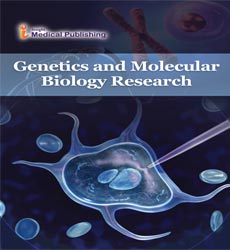Mitochondrial DNA Inherited Manifest Risk of Common Diseases
Narender Kapoor*
Department of Bioinformatics, Amity University, Noida, India
- Corresponding Author:
- Narender Kapoor
Department of Bioinformatics, Amity University, Noida, India
E-mail: kumarn0047@gmail.com
Received Date: May 15, 2021; Accepted Date: May 27, 2021; Published Date: June 14, 2021
Citation: Kapoor N (2021) Mitochondrial DNA inherited Manifest Risk of Common Diseases: Opinion. Genet Mol Biol Res Vol No: 5 Iss No: 3:49
Copyright: © 2021 Kapoor N. This is an open-access article distributed under the terms of the Creative Commons Attributions License, which permits unrestricted use, distribution and reproduction in any medium, provided the original author and source are credited.
Almost all the DNA that creates up the human genome is contained within the nuclei of our cells. Nuclear DNA codes for the characteristics that make us individual also as for the proteins that do most of the add our bodies.
They are doing this by converting the food we consume into ATP, a molecule which will release energy very quickly. Mitochondria also contain a small amount of DNA—mitochondrial DNA, mtDNA —which makes up only 0.1% of the general human genome but is passed down exclusively from mother to offspring.
While errors in mitochondrial DNA can cause mitochondrial diseases, which may be severely disabling, so far there had been little evidence that variants in mitochondrial DNA can influence more common diseases. Several small-scale studies have hinted at this possibility, but scientists are unable to duplicate their findings. The results suggested that mitochondrial DNA might influence diseases like type 2 diabetes, multiple sclerosis, and factors like liver and kidney function, blood count parameters, lifespan, and height.
Some of the consequences were seen more extremely in patients with rare inherited mitochondrial diseases—for example, patients with severe disease are often shorter than average—whereas the consequences in healthy individuals attended be much subtler, likely accounting for just a couple of millimeters’ height difference, for instance.
There are several possible explanations for a way mitochondrial DNA exerts its influence, the team suggested. One is that changes to mitochondrial DNA cause subtle differences in our ability to supply energy. However, it is likely to be more complicated, affecting complex biological pathways inside our bodies—the signals that allow our cells to work during a coordinated fashion.
Unlike nuclear DNA, which is passed down from both the mother and therefore the father, mitochondrial DNA is inherited exclusively from the mother. this can indicate that the 2 systems are inherited independently, in order that there should be no association between an individual’s nuclear DNA and mitochondrial DNA.
One reason which will explain this is often the necessity for compatibility. ATP is produced by a gaggle of proteins inside the mitochondria called the respiratory chain. There are over 100 components of the respiratory chain, 13 of which are coded for by mitochondrial DNA, the rest being encoded by nuclear DNA.
Albeit proteins within the respiratory chain are being produced by two different genomes, the proteins got to physically interlock like pieces of a jigsaw. If the mitochondrial DNA inherited by a toddler was not compatible with the nuclear DNA inherited from the daddy, the jigsaw would not fit together properly, thereby affecting the respiratory chain and, consequently, energy production.
This might subtly influence an individual’s health or physiology, which over time might be disadvantageous from an evolutionary perspective. Conversely, matches would be encouraged by evolution and thus become more common.
Open Access Journals
- Aquaculture & Veterinary Science
- Chemistry & Chemical Sciences
- Clinical Sciences
- Engineering
- General Science
- Genetics & Molecular Biology
- Health Care & Nursing
- Immunology & Microbiology
- Materials Science
- Mathematics & Physics
- Medical Sciences
- Neurology & Psychiatry
- Oncology & Cancer Science
- Pharmaceutical Sciences
